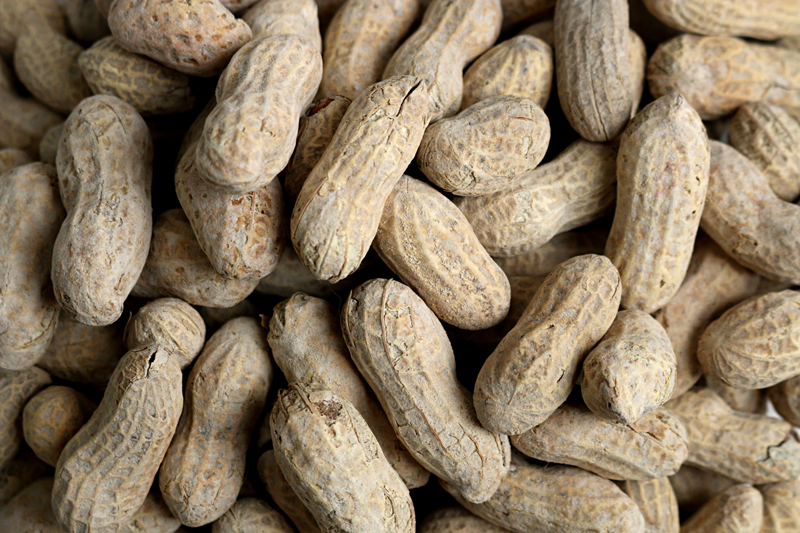As a result of severe reactions which have occurred aboard airplanes during flights in recent years, a movement for the call of airplanes to be required to be equipped with epinephrine autoinjectors has been growing.
Should Airlines Be Required to Equip Airplanes With Epinephrine Autoinjectors?
“Believe it or not every airline in Australia carries easy to use autoinjectors and has nurses train airline personnel and on how do use them”, Lianne Mandelbaum — who is the founder of The No Nut Traveler — said to me recently. “They also have an airline specific action plan that is easy to follow in their manuals.”
An epinephrine autoinjector is a medical hand-held device carried by those who have severe allergies and is used for the injection of a minimum of one measured dose of epinephrine — which is another term for adrenaline — by means of auto injector technology. It is most commonly used for the treatment of a severe reaction to peanuts known as anaphylaxis, which can result in serious injury or death.
Two Recent Incidents as Examples
Gianluca Ingrassia suffered a dangerously severe allergic reaction aboard an airplane operated by American Airlines during a flight from Aruba to New York on Tuesday, February 27, 2018. His mother had no idea that her son — who is ten years old — was allergic to nuts until the incident occurred.
Here is the story as told by Francine Ingrassia in her own words on Facebook:
I’m sharing my story to RAISE Awareness. My son had Serious Anaphylaxis symptoms on our flight home last night. He ate one cashew from the nut mix he was served on our flight and within minutes he had severe stomach pain , chest pain and stridor breathing. If it was not for the quick thinking stewardess on the plane. The nurse who admistered the epi pen and cared for him the entire trip and passengers who gave us their epi pens this would have been fatal.
American Airlines had no epi-pens in their medical kits. We were not aware of any allergies that our son had with cashews before this flight. The pilots were prepared to do an emergency landing in the Dominican Republic.
The scariest thing was that American Airlines did not have an epi pen in their medical kits and served nuts on a plane? We need to change this. Shame on American Airlines for not having an epi pen in their medical kits.
I am forever grateful , Nurse Kelly who saved my sons life & sat with us the entire flight, the 2 passengers who gave us their epi pens, the quick thinking stewardess , the pilots and the paramedics who boarded the plane once we landed to check his vitals. Things could have been very different if it wasn’t for all these angels completely aligned. My heart is bursting and I thank God for watching over us.
Please feel free to share my story, together we can save lives.
Ingrassia hopes that by spreading the word pertaining to the incident involving her son — which could have been fatal without intervention — a federal bill which would have required airlines to stock each plane with at least two packs of epinephrine autoinjectors and train air crew members on how to use them will be revived. That bill — which was known as S.1972 – Airline Access to Emergency Epinephrine Act of 2015 — failed to pass and become law.
In a more recent incident, Christian Calvert suffered from a severe allergic reaction which was allegedly triggered by peanut dust in the air during a flight from Atlanta to Houston — despite the parents having informed both a customer service representative while booking a reservation for a flight operated by Southwest Airlines and agents at the ticket counter when the family arrived at the airport.
“She (an attendant) handed me some peanuts and that’s when, as a mom, I just basically broke down — ‘what do you mean?’” said Chelsia Calvert — who is the mother of the nine-year-old boy and wondered how many bags of peanuts were handed out aboard the airplane — according to this article written by Leigh Frillici of KPRC Click2Houston. “And so with his throat closing up, we’re making decisions like, OK, we have to do this because this is life or death.”
Fortunately, the family was equipped with an epinephrine autoinjector and quickly administered it to Christian — but did representatives of Southwest Airlines ignore the multiple warnings by the parents of the peanut allergy of their son?
“Can you imagine flying home from a family vacation and having a first-time anaphylactic reaction in the air?” Lianne Mandelbaum asked in this article. “Did you know that airlines are not required to stock their planes with easy-to-use auto injectors that any adult or child could operate?”
Mandelbaum believes that the time has come “for the airline industry to share responsibility for the safety of food allergic passengers and develop a clear and consistent approach. It is also necessary to educate all airline staff on the severity of food allergies and to be prepared in the event of an emergency by labeling emergency medications and having easy to use auto injectors onboard.”
This is not an unreasonable request. The Federal Aviation Administration issued this final rule on Thursday, April 12, 2001 which required airlines based in the United States to carry automated external defibrillators and enhanced emergency medical kits on all domestic and international flights within three years. The rule — which responds to the Aviation Medical Assistance Act of 1998 — affects airplanes which weigh greater than 7,500 pounds each and have at least one flight attendant aboard.
Allergy Statistics
“Private insurance claim lines with diagnoses of anaphylactic food reactions rose 377 percent from 2007 to 2016,” according to data from FAIR Health, which is a national independent nonprofit organization dedicated to bringing transparency to healthcare costs and health insurance information. The study “found that peanuts were the most common specifically identified food causing anaphylaxis, accounting for 26 percent of those claim lines. Tree nuts and seeds followed closely at 18 percent. Also common were egg allergies, crustacean allergies (e.g., allergies to shrimp or lobster) and dairy allergies, making up, respectively, 7 percent, 6 percent and 5 percent of claim lines. The most common category, however, was “other specific foods” (33 percent), which typically means the food causing the anaphylactic reaction is unknown.”

Another study from last year “shows that slightly more than half of American adults report developing at least one food allergy after the age of 18.” The findings were drawn from a population sample of greater than 40,000 adult Americans.
“Once a serious allergic reaction (anaphylaxis) starts, the drug epinephrine is the only effective treatment”, according to this article of facts and statistics from Food Allergy Research and Education, which is an advocacy organization that works on behalf of the approximately 15 million Americans who suffer from food allergies and includes 5.9 million children younger than the age of 18.
Other interesting facts and statistics include:
- Every three minutes, a food allergy reaction sends someone to the emergency room.
- Each year in the United States, 200,000 people require emergency medical care for allergic reactions to food.
- Childhood hospitalizations for food allergy tripled between the late 1990s and the mid-2000s.
- Approximately 40 percent of children with food allergies have experienced a severe allergic reaction such as anaphylaxis.
- Greater than 170 foods have been reported to cause allergic reactions.
- Eight major food allergens — milk, egg, peanut, tree nuts, wheat, soy, fish and crustacean shellfish — are responsible for most of the serious food allergy reactions in the United States.
- The Centers for Disease Control and Prevention reports that the prevalence of food allergy in children increased by 50 percent between 1997 and 2011.
Summary
No cure currently exists for food allergies. The only way in which food allergies can be managed is by avoiding the problem foods and learning to recognize and treat the symptoms of reactions.
My guess is that the costs of supplying epinephrine autoinjectors aboard airplanes — as well as training members of flight crews on the proper way to administer them to passengers in need — is the main obstacle to airlines voluntarily equipping them for all flights.
For the sake and safety of passengers who suffer from severe allergies, I hope that they get to see the day when all airlines supply epinephrine autoinjectors aboard all airplanes for all flights.
A list of past articles which I have written at The Gate that deal with the topic of food allergies — and a couple of additional articles about being embarrassed by allergic reactions — include:
- Privacy of Allergy Sufferers Being Abused by Airlines?
- Can You Correctly Guess Which Are the Eight Major Food Allergens?
- Is the Food Allergy Policy of American Airlines Considered Discriminatory?
- Preventing Peanut Allergies: Hope for the Future?
- Product Recall: Think Twice Before Eating That Cookie or Cake Product Aboard an Airplane?
- Passengers Applaud as Boy Allergic to Dog is Removed From Airplane
- Update: Misinterpretation of Applause From Passengers Over Allergic Boy? What Really Matters is…
- Updates: Father of Allergic Son Dies; Brussels Airport; New Zealand Flag Results; Free Hotel Night Contest
- Peanut Allergy of Son Results in Family Leaving the Airplane Prior to Flight
- Peanut Allergy Policies of Airlines: A Comprehensive List
- From the Peanut Gallery: Should Food Allergies Determine What is Served Aboard Airplanes?
- A Patch to Deal With Peanut Allergies?
- Nut Allergies: Both Sides of This Issue In the News
Photograph ©2015 by Brian Cohen.

